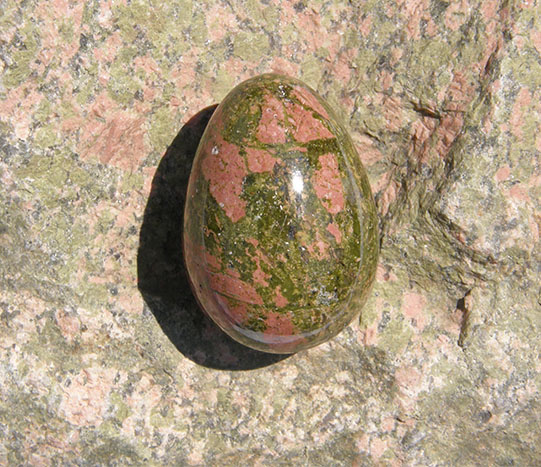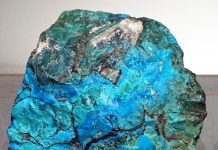
By Jim Brace-Thompson
Unakite is metamorphosed granite that has been altered by undergoing what is called “epidotization”; therefore, it is sometimes called “epidotized granite”. Granite generally consists of feldspar, quartz, mica and hornblende. During the metamorphic processes that lead to the formation of unakite, less resistant minerals in granite are altered or replaced by epidote.
The result is an attractive rock with pink and green patches locked together by translucent and gray veins. The pink is orthoclase feldspar and the green is epidote. The veins and patches are quartz.
Unaka Mountains Locality
Unakite was first described by East Tennessee State University geologist Frank Bradley in 1874. He named it for the location where it was discovered: the Unaka Mountains of North Carolina.
Since then, it has been found and collected in the Blue Ridge province, encompassing eastern Tennessee, western North Carolina, and Virginia. Unakite specimens in Virginia tend to be found in river valleys, having washed down from the Blue Ridge.
Similarly, isolated pebbles and cobbles are found in the Upper Midwest on the shores of Lake Superior, where they were deposited from ancient glacial drift. Unakite also comes from South Africa, Sierra Leone, Brazil and China.
With a Mohs hardness between 6.0 and 7.0, unakite takes a polish and is considered a semiprecious gemstone for lapidary uses. You might see it used for gemstone eggs, spheres, carvings and beads. It is also cabbed to be set into jewelry pieces like brooches, bracelets and rings.
In surfing the web, you will see unakite referred to as the state gemstone of Virginia. It was once proposed as such, but so far as I’m aware, it has not yet been made official. Always double-check what you read on the web with official sources!















